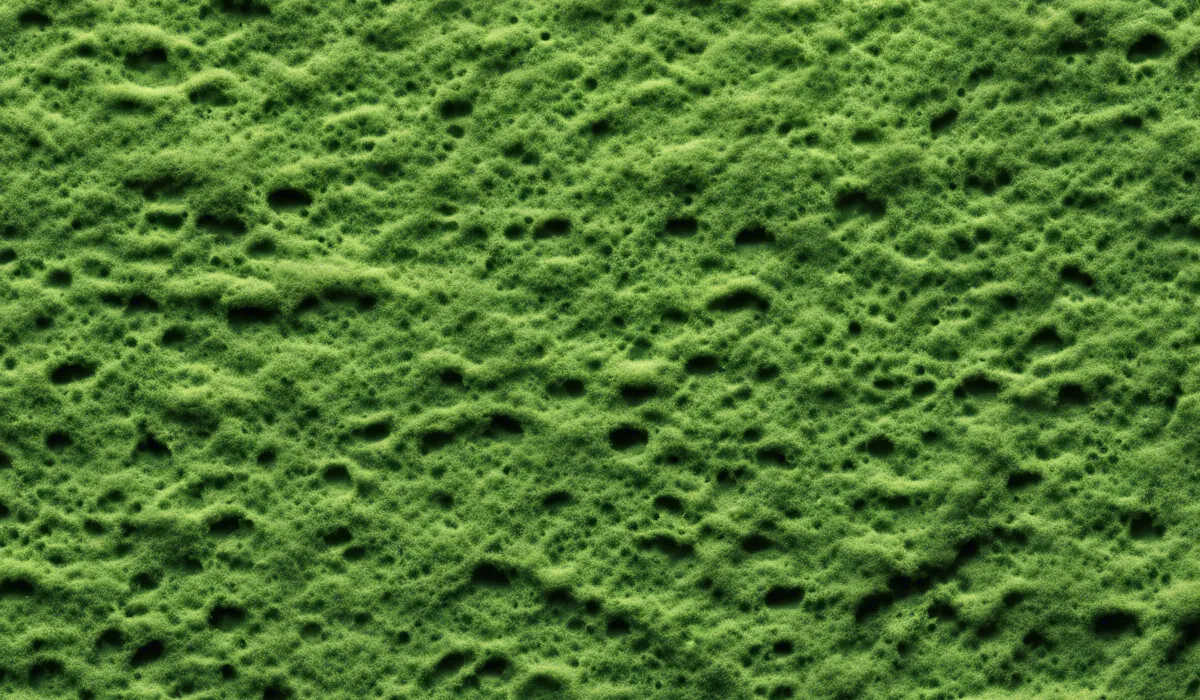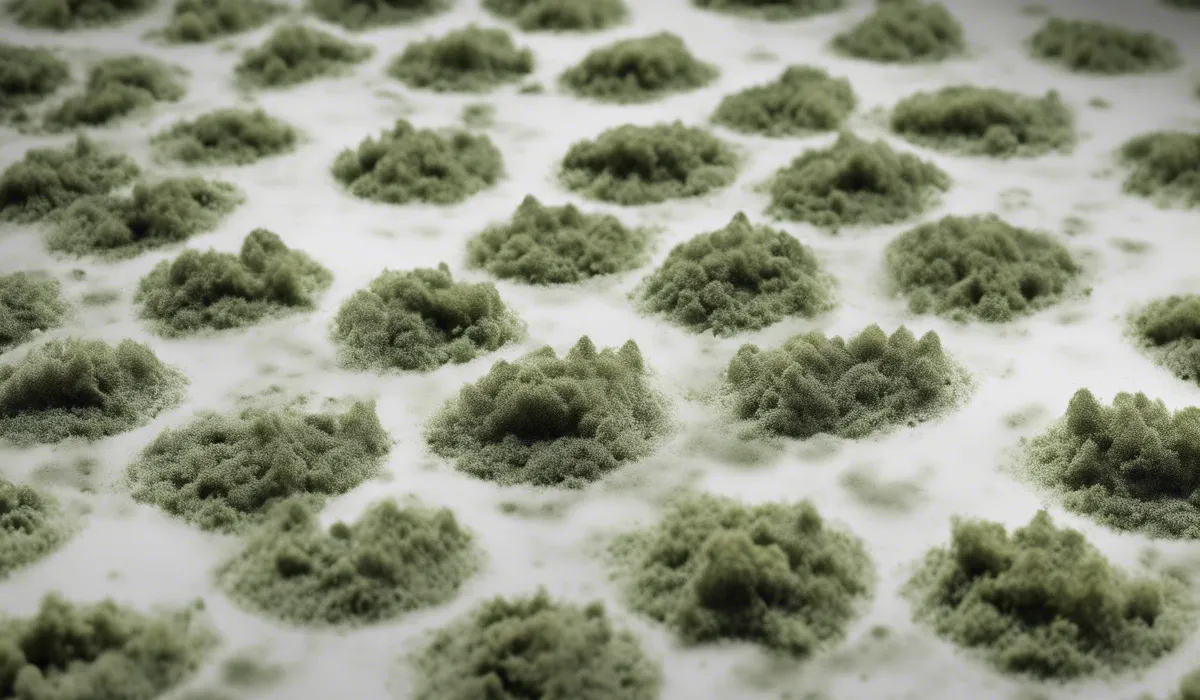Yes, fungicide can kill mold. Fungicides are specifically formulated to eliminate fungi, including mold. They disrupt mold growth and spore production, effectively controlling mold infestations when applied correctly.
Understanding Fungicides and Mold

Defining Fungicides and Their Mechanism
Fungicides are chemicals designed to control or eliminate fungi, which include a wide range of organisms such as mold, mildew, and rust.
These substances work by disrupting the life processes of fungi, including their ability to reproduce and grow.
This disruption can happen in various ways, such as by damaging the cell walls of the fungi, inhibiting critical enzymes, or interfering with the fungus’s energy production.
Impact of Mold on Environments
Molds are a type of fungi that can be found in many environments. They play a crucial role in nature by breaking down dead organic matter.
However, in homes and other buildings, mold growth can lead to property damage and health issues such as allergies and respiratory problems.
Mold can grow on virtually any substance when moisture is present, making it a persistent issue in damp environments.
Fungi and Mold: Understanding the Relationship
All molds are fungi, but not all fungi are molds. Fungi are a kingdom of organisms that include yeasts, molds, and mushrooms.
Molds are a subset of fungi that are particularly adept at colonizing and decomposing organic materials.
They reproduce by releasing spores into the air, which can then settle in new locations and begin the growth cycle anew.
Optimal Conditions for Mold Proliferation
Mold thrives in moist, warm, and poorly ventilated areas. Commonly, mold problems occur in places like bathrooms, kitchens, basements, and areas where water damage has occurred.
Organic materials such as wood, paper, carpet, and food provide the nutrients mold needs to grow.
Controlling humidity and ensuring good ventilation are key to preventing mold development.
Efficacy of Fungicides in Killing Mold

Chemical Composition and Mold Response
The chemical composition of fungicides is diverse, with some designed to be broad-spectrum, while others target specific fungi.
They contain active ingredients such as chlorothalonil, copper compounds, and azoles, which are effective against a wide range of mold species.
The chemicals in fungicides disrupt the critical processes within mold cells, leading to their death.
Research on Fungicide Effectiveness
Extensive research has been conducted to determine the effectiveness of fungicides against mold.
Studies have demonstrated that with proper application, fungicides can significantly reduce mold growth and prevent spore production.
It is important to note that the effectiveness can vary based on the mold species and the environment in which it is found.
Factors Influencing Fungicide Success
Several factors influence how successful a fungicide will be in eliminating mold.
These include the concentration of the fungicide, the frequency of application, the type of surface being treated, and the specific species of mold.
Ensuring that the fungicide is applied in accordance with the manufacturer’s instructions is critical to its success.
Comparing Fungicide Potency
Different fungicides have varying levels of potency against mold species. Some are better suited for indoor use, while others are formulated for outdoor or agricultural applications.
When choosing a fungicide, it is essential to consider the specific mold problem and select a product that has been proven effective for that application.
Application and Safety Considerations

Proper Techniques for Fungicide Application
Applying fungicides correctly is key to controlling mold.
This includes preparing the affected area by cleaning and removing any loose mold, following the recommended dilution rates, and applying the fungicide evenly across the surface.
For larger infestations, it may be necessary to apply the fungicide multiple times to fully eliminate the mold.
Safety Measures for Fungicide Use
When handling and applying fungicides, safety should be the top priority. Wear protective clothing, gloves, and masks to prevent inhalation or skin contact with the chemicals.
Always work in a well-ventilated area and follow the manufacturer’s instructions carefully to avoid any health risks.
Environmental Regulations for Fungicides
Due to their potential impact on the environment, the use of fungicides is subject to regulation. It is important to be aware of and comply with local environmental laws when using fungicides.
This includes proper storage, handling, and disposal of fungicides to prevent contamination of water sources and harm to non-target organisms.
Alternatives for Mold Control and Prevention
While fungicides are an effective tool for killing mold, there are alternative methods for controlling and preventing mold growth.
These include reducing indoor humidity, improving ventilation, fixing leaks promptly, and using mold-resistant building materials.
Regular cleaning and maintenance can also prevent mold from becoming a problem.
FAQs About Fungicide and Mold
Can fungicide effectively kill mold?
Yes, fungicides are designed to kill mold and can be effective when used as directed.
Is mold a type of fungus that fungicide can target?
Yes, mold is a type of fungus, and fungicides are created to target and eliminate fungal organisms, including mold.
How does fungicide work to control mold?
Fungicide disrupts mold growth and prevents spore production, which helps to control mold infestations.
Are all fungicides effective against all types of mold?
Not all fungicides are effective against every type of mold. It’s important to choose a fungicide that is specifically formulated to target the mold species you are dealing with.
Should I apply fungicide as a preventive measure against mold?
Applying fungicide as a preventive measure can be helpful in environments prone to mold, but it’s important to follow the manufacturer’s instructions and safety guidelines.
Final Thoughts
Fungicides are designed to combat fungi, including mold, by hindering their growth and preventing spore formation.
These substances are effective in controlling mold outbreaks when used properly, ensuring that mold infestations are addressed through targeted action.
